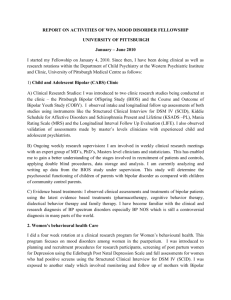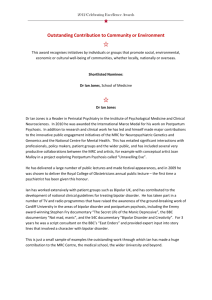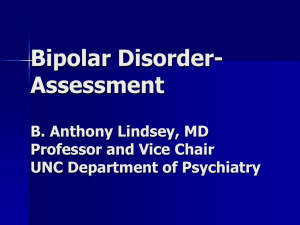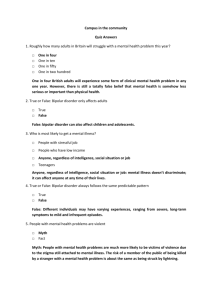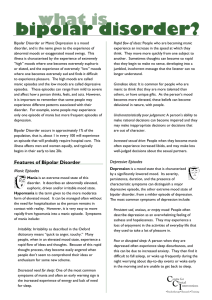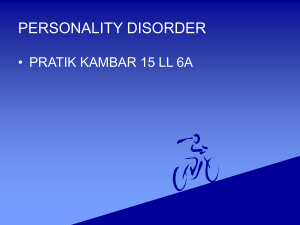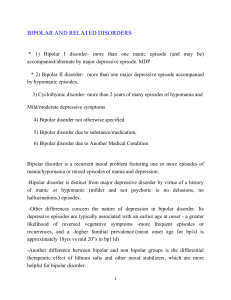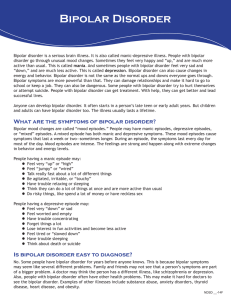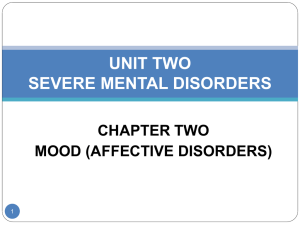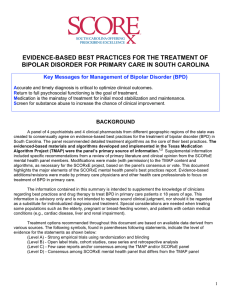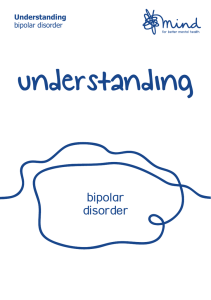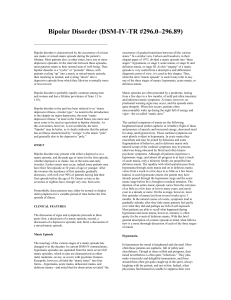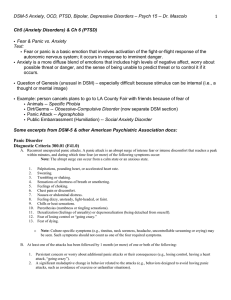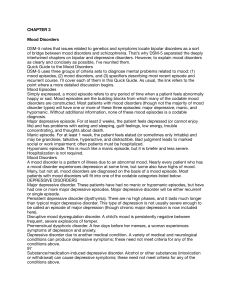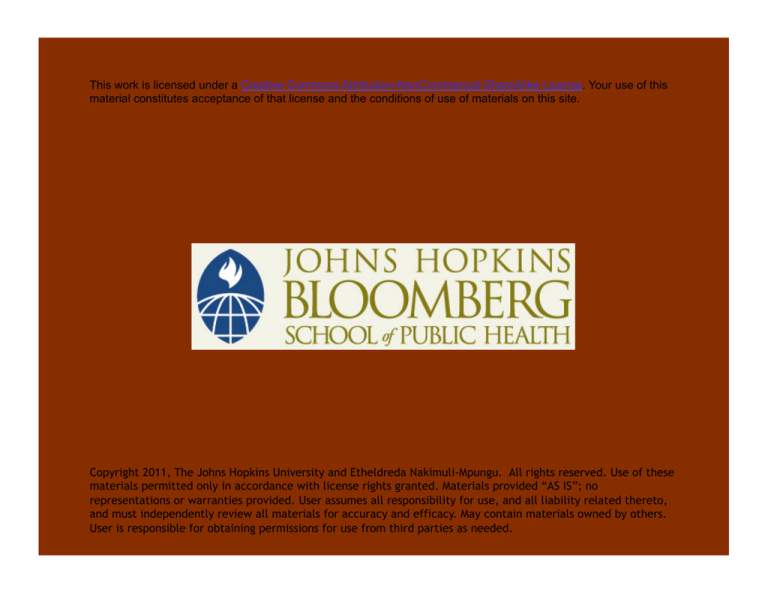
This work is licensed under a Creative Commons Attribution-NonCommercial-ShareAlike License. Your use of this
material constitutes acceptance of that license and the conditions of use of materials on this site.
Copyright 2011, The Johns Hopkins University and Etheldreda Nakimuli-Mpungu. All rights reserved. Use of these
materials permitted only in accordance with license rights granted. Materials provided “AS IS”; no
representations or warranties provided. User assumes all responsibility for use, and all liability related thereto,
and must independently review all materials for accuracy and efficacy. May contain materials owned by others.
User is responsible for obtaining permissions for use from third parties as needed.
Section B
Severe Mood Disorders
Photo by gbaku. Creative Commons BY-SA. Retrieved from
http://www.flickr.com/photos/gbaku/2900264240/sizes/m/
Mood Disorders
Bipolar disorder
- Manic phase
-
-
Depressed phase
Mixed phase
Chronic major depression with psychotic features
3
Classification, DSM-IV: Bipolar Disorder—Manic Phase
A. Abnormally and persistently elevated, expansive, or irritable mood
B. Three (or more) of the following symptoms
1. Inflated self-esteem or grandiosity
2. Decreased need for sleep (e.g., feels rested after only three
hours of sleep)
3. More talkative than usual or pressure to keep talking
4. Flight of ideas (racing thoughts)
5. Distractibility
6. Increase in goal-directed activity (either socially, at work or
school, or sexually)
7. Excessive involvement in pleasurable activities that have a high
potential for painful consequences
4
Bipolar Disorder—Manic Phase
C. No depressive symptoms
D. Impairment in functioning
E. Not due to substance abuse or other disease
5
Clinical Presentation
Extremely funny
Flamboyant, extravagant
Poor judgment—risky behaviors
Good academic achievement
Lack of sleep
Excessive energy
Excessively rapid and loud speech
Hallucinations and delusions result in
- Unusual behaviors
- Hyperactivity
-
-
Suspicion
Aggression
6
Symptoms and Associated Factors
Other associated problems include
- School truancy
-
-
-
-
School failure
Occupational failure
Divorce
Episodic antisocial behavior
7
Lab Findings
No laboratory features are diagnostic of bipolar disorder nor
distinguish major depressive episodes found in bipolar disorder from
those in major depressive disorder
Imaging studies tend to show increased rates of right hemispheric
lesions, or bilateral sub-cortical or peri-ventricular lesions in those
with bipolar I disorder
8
Prevalence and Incidence
Lifetime prevalence of bipolar disorders: 0.4% to 1.6%
- Kessler, R. C., et al. (1994). Lifetime and 12-month prevalence
of DSM-III-R psychiatric disorders in the United States. Archives
of General Psychiatry, 51, 8–19.
Incidence rates for bipolar disorders: 2.6 to 20.0 per 100,000 per
year
- Lloyd and Jones. (2002).
9
Etiology
Familial disease
- First-degree biological relatives of individuals with bipolar I
disorder have elevated rates of bipolar disorder (4% to 24%)
Twin studies and adoption studies
- Provide strong evidence of a genetic influence for bipolar
disorder
10
Course and Prognosis
Age at onset—20s, but some cases start in adolescence
Occur following psychosocial stressors
Sleep deprivation may precipitate or exacerbate a manic, mixed, or
hypomanic episode
Duration—a few weeks to several months
11
Course and Prognosis
In 50% to 60% of cases, a major depressive episode precedes or
immediately follows a manic episode
There is normal functioning in between episodes
12
Course and Prognosis
The interval between episodes tends to decrease as the individual
ages
Approximately 5% to 15% of individuals with bipolar I disorder have
multiple (four or more) mood episodes (major depressive, manic,
mixed, or hypomanic) that occur within a given year (rapid cycling)
A rapid-cycling pattern is associated with a poorer prognosis
13



